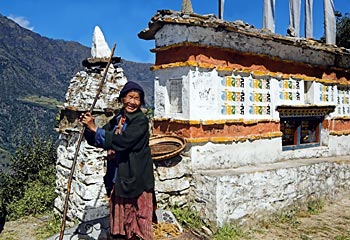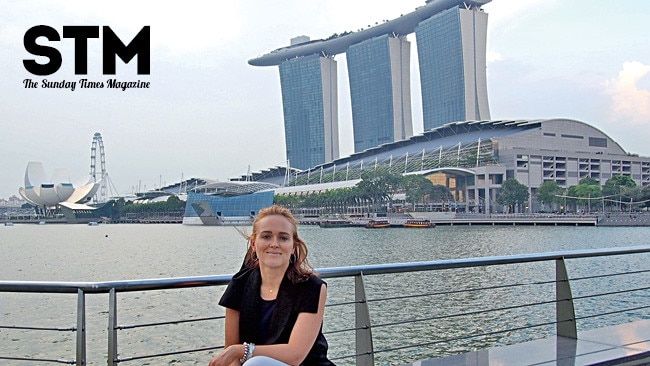Magic on India's wild frontier
FUNNY how, by visiting an unspoiled place, you get to spoil it, writes Graham Simmons after a trip to a remote and exceedingly friendly corner of India.

FUNNY how, by visiting an unspoiled place, you get to spoil it. The 1000 residents of Singchung, in Arunachal Pradesh, a remote north-eastern state of India, eke out a living farming the rocky slopes; dice games and whisky help to while away the evenings.
But things haven't always been so good in Singchung. In 1962, the Chinese invaded Arunachal Pradesh, over-running its main town, Bomdila, and getting as far south as Singchung.
"Fortunately, they did no real harm," says local Ratan Subha. "All they wanted from us was a little maize and chillies and a lot of rice wine."
The name Arunachal comes from the words Aruna, meaning "the first ray of sunlight" and Achal, or "mountain".
In my own case, being allowed across the border from Assam into Arunachal in the first place felt like the first ray of hope after having climbed a bureaucratic mountain just to get here.
My guides to the wonders of Arunachal Pradesh are Wangchu and Zangmo, newlyweds who seem to relish the chance to be on the road. Maybe their newly-wed status accounts for Wangchu's relatively sedate driving – unlike most of his countrymen, who seem to have learned their skills in a video-games saloon.
On the road from the Bhalukpong border post, the Indian military presence in Arunachal Pradesh is overwhelming. The Ball of Fire division is one of the elite outfits keeping the Chinese hordes at bay, 43years after the Chinese invasion.
In these elevated climes, the Cold War is taking a good while to thaw.
From Bomdila through to the Tibetan border, the locals belong to the Monpa tribal group.
The Monpa are renowned for their happy disposition – not least due to imbibing copious amounts of rice wine.
Past the town of Dirang, the road begins to climb steeply, heading up to the Sela Pass. Coming from the plains and 35C temperatures, I was unprepared for the biting cold.
At 4150m, Sela Pass is said to be the second-highest drivable road in the world – little comfort to one who has failed to bring sufficiently warm clothing.
Tawang town, a breathless 3200m above sea level, has magnificent views over the Tawang Monastery, said to be the world's second-largest Buddhist monastery (after Lhasa's Potala). Guests at the new Tawang Inn enjoy six-star vistas over the monastery and mountains.
Getting to the scenic Lake Pankang Teng Tso, at 4100m, is another challenge.
The lake lies on the strictly off-limits Tawang-Lhasa road (which bears the signpost "Beijing 4306km"). The guard is as stony-faced as the mountains all around, but his demeanour changes eventually.
"See the police commissioner and get a road permit," he says. An hour later, armed with a laboriously hand-written permit, we're on our way.
Gorsham Stupa, near the village of Zemithang, in the far north-east of Arunachal Pradesh, is an extraordinary structure – a replica of the Swayambunath Temple, in Kathmandu, and of two similar stupas in Bhutan and at Kham, in eastern Tibet.
Dominating a river valley, its eyes seem to penetrate the most hidden depths of the soul.
Pema Yeshi Gyamo, a schoolteacher in Zemithang, explains: "This whole region was once a beyul, one of 108 sacred valleys chosen by Guru Rinpoche (who brought Buddhism to this region in the ninth century).
"Our district was a special place, where nature yielded everything without anyone needing to work. The people were called beymir, meaning citizens of Shangri-La."
Pema Yeshi later points out a sacred lake, Lake Beluktsi-Sor, inhabited by a naga (serpent-being) that has to be placated every now and again.
"Seven generations ago, the naga came out of the lake and gave a precious stone to one of our villagers, Onbugorung.
"The stone is still worn by Mrs Dorjee Chhon, of Medpaye village – up on that ridge over there," Pema Yeshi says, pointing to a seemingly inaccessible hilltop hamlet.
Alongside the all-pervasive mystery and magic of Arunachal Pradesh, the visitor is liable to be won over by the kindness of people here, who give of themselves and expect nothing in return.
So would the locals like to see an influx of visitors, or do they think that tourism would spoil Arunachal Pradesh?
"We would like more and more tourists," one local says. "We can learn a lot from them."
So maybe I wasn't spoiling an unspoiled place after all. In any case, who are the spoilers and who are the spoiled?
Whatever the truth, Arunachal Pradesh is now spoiling to share its hidden wonders with discriminating visitors.
The Sunday Telegraph



